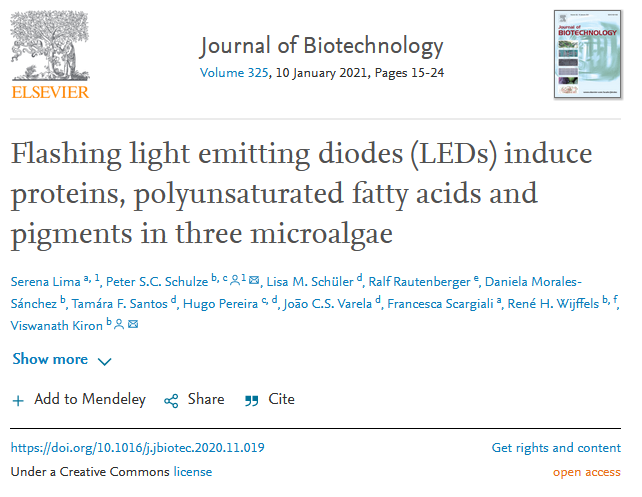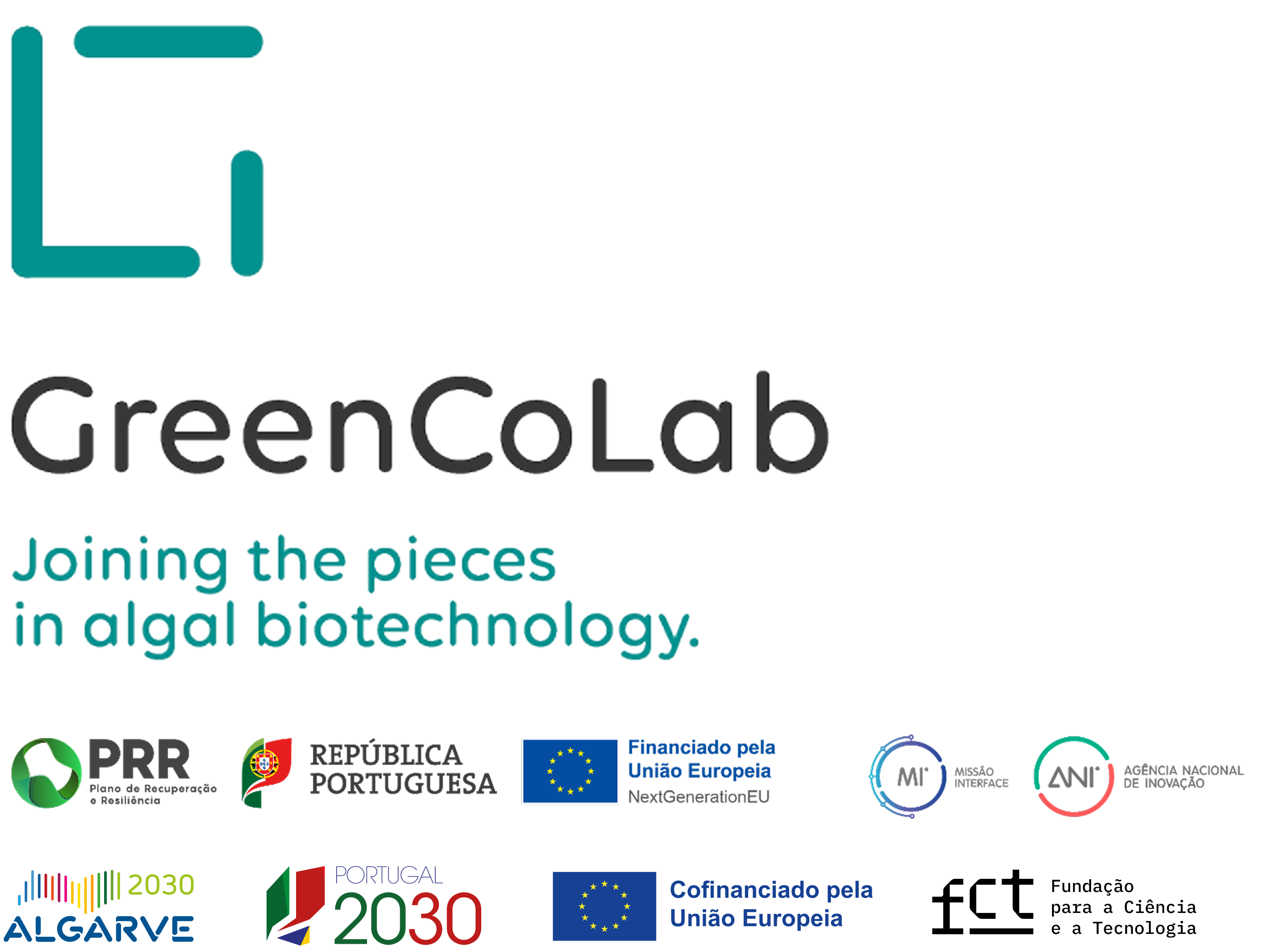

TITLE
Flashing light emitting diodes (LEDs) induce proteins, polyunsaturated fatty acids and pigments in three microalgae
JOURNAL
Journal of Biotechnology
AUTHORS
Serena Lima, Peter S. C. Schulze, Lisa M. Schüler, Ralf Rautenberger, Daniela Morales-Sánchez, Tamára F. Santos, Hugo Pereira, João C. S. Varela, Francesca Scargiali, René H. Wijffels, Viswanath Kiron
ABSTRACT
As the periodic emission of light pulses by light emitting diodes (LEDs) is known to stimulate growth or induce high value biocompounds in microalgae, this flashing light regime was tested on growth and biochemical composition of the microalgae Nannochloropsis gaditana, Koliella antarctica and Tetraselmis chui. At low flashing light frequencies (e.g., 5 and 50 Hz, Duty cycle = 0.05), a strain-dependent growth inhibition and an accumulation of protein, polyunsaturated fatty acids, chlorophyll or carotenoids (lutein, β-carotene, violaxanthin and neoxanthin) was observed. In addition, a 4-day application of low-frequency flashing light to concentrated cultures increased productivities of eicosapentaenoic acid (EPA) and specific carotenoids up to three-fold compared to continuous or high frequency flashing light (500 Hz, Duty cycle = 0.05). Therefore, applying low-frequency flashing light as finishing step in industrial production can increase protein, polyunsaturated fatty acids or pigment contents in biomass, leading to high-value algal products.


